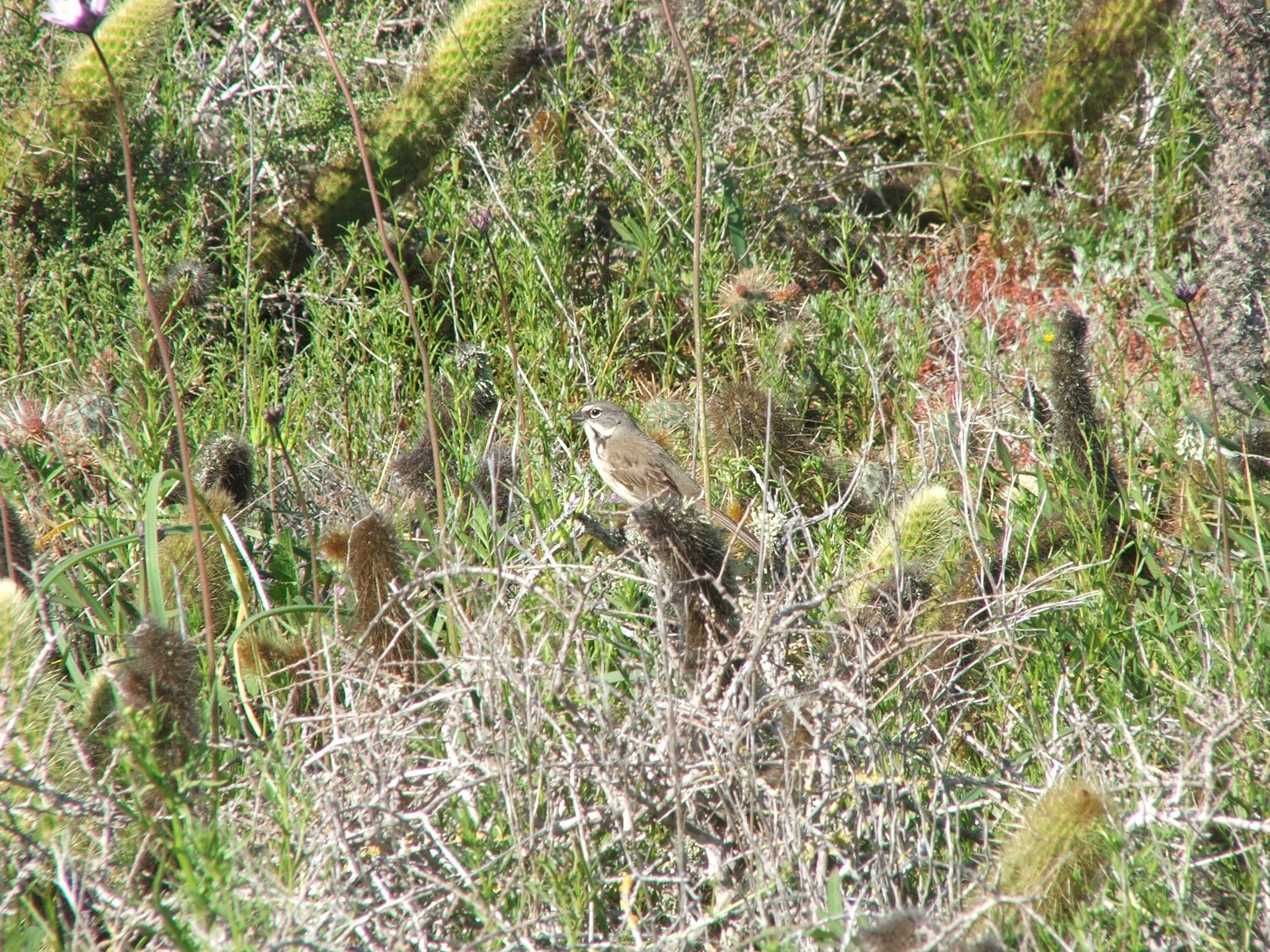A Recovery Story for the San Clemente Island Bell’s Sparrow








On 24 February 2023, the recovery of San Clemente Bell’s Sparrow became official and the bird was taken off of the list of species protected under the Endangered Species Act. When it was listed in 1977, much of the island had been subject to severe habitat degradation caused by feral goat herbivory and heavy erosion cause by both the goats and feral pigs. Bell’s sparrow breeding habitat was restricted to a narrow band of habitat along the western terraces of San Clemente Island. The U.S. Navy and partner organizations, including the Institute for Wildlife Studies, removed nonnative goats from San Clemente Island by 1993, kick-starting island-wide recovery of island vegetation.
In 1999, the Navy partnered with IWS to monitor Bell’s sparrows. These monitoring efforts helped the Navy effectively carry out its primary mission on San Clemente Island while meeting its obligations as a steward of the natural resources found on its bases. In 2005 the first evidence of Bell’s sparrow breeding on the eastern side of the island was recorded, and by 2013 Bell’s sparrow breeding territories had been documented across the island. In the decade since then, the IWS monitoring program documented a robust population of the Bell’s sparrow island-wide leading to their change in status from Threatened to Recovered. IWS is proud of our role in the effective conservation program under the bold leadership of the U.S. Navy that resulted in the recovery of the Bell’s sparrow and the first four plants to be listed under the Endangered Species Act.
View the press release from Department of Defense here